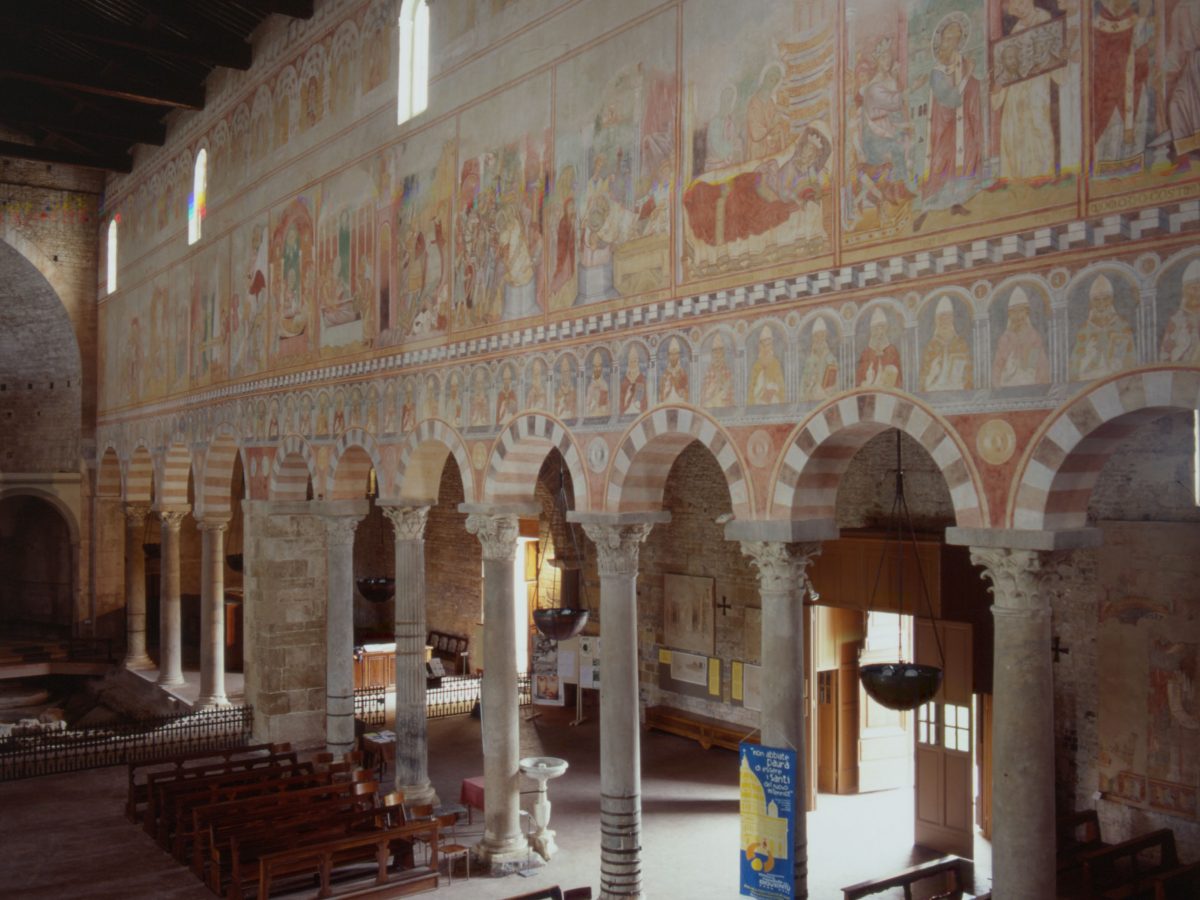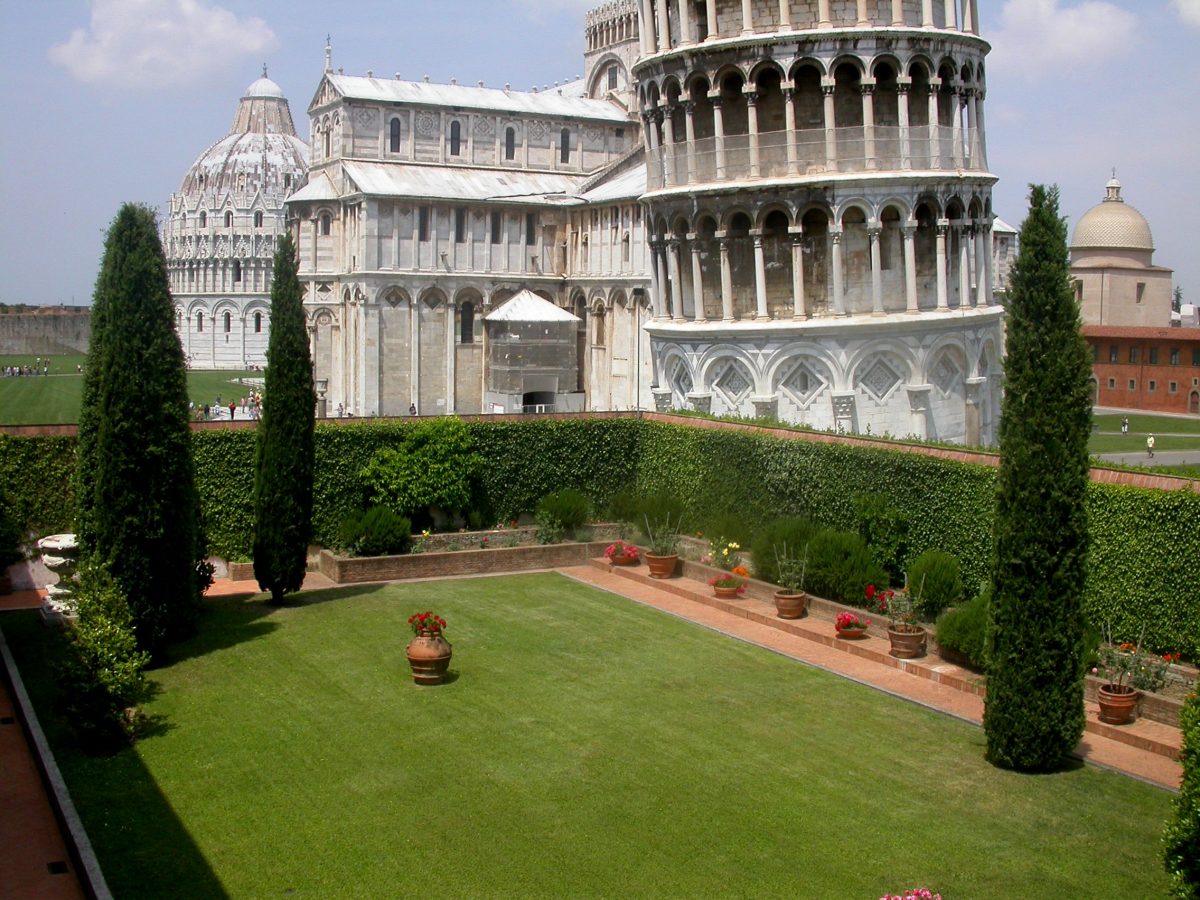| Standing in a large green expanse, enclosed by the city walls, the former Ospedale della Misericordia and the Palazzo dell’Arcivescovato, the Piazza del Duomo at Pisa comprises one of the most renowned constructed landscapes in the world. The four masterpieces of medieval architecture – the cathedral, the baptistery, the campanile (the ‘Leaning Tower’) and the cemetery – were erected between the 11th and 14th centuries within close proximity of each other, forming a unique cluster of monuments. The square must be considered as a cultural heritage of exceptional universal value, since the works of art that it contains, are masterpieces bearing witness of the creative spirit of the 14th century. Its monuments are a so decisive stage in the history of the medieval architecture that they became a reference point for the study related to the Pisan Romanesque style. The Camposanto and its cycle of frescoes, with particular typology and use, constitutes an outstanding example for the history of Italian medieval painting of the 14th and 15th centuries. |
Criterion (i): Artistically unique because of its spatial design, the Piazza del Duomo contains four absolute architectural masterpieces : the Cathedral, the baptistery, the campanile and the Campo Santo. Within these monuments are such world-renowned art treasures as the bronze and mosaic doors of the cathedral, the pulpits in the baptistery and cathedral, the frescoes of the Campo Santo, and many others.
Criterion (ii): The monuments of the Piazza del Duomo considerably influenced the development of architecture and monumental arts at two different times in history. 1) First, from the 11th century up to 1284, during the epitome of Pisa's prosperity, a new type of church characterized by the refinement of polychrome architecture and the use of loggias was established. The Pisan style that first appeared with the Cathedral can be found elsewhere in Tuscany (notably at Lucques and Pistoia), but also within the Pisan maritime territory, as shown in more humble form by the "pieve" in Sardegna and Corsica. 2) Later, during the 14th century, architecture In Tuscany was dominated by the monumental style of Giovanni Pisano (who sculpted the pulpit of the Cathedral between 1302 and 1311), a new era of pictorial art - the Trecento- was ushered in after the epidemic of the black death (Triumph of Death, a fresco by Francesco Traini at the Campo Santo, c. 1350).
Criterion (iv): The group of monuments of the Piazza del Duomo, composed of typical religious buildings constructed for distinct and specific functions, constitutes an outstanding example of medieval Christian architecture.
Criterion (vi): It was at the Cathedral of Pisa that Galileo Galilel 1564-1642), observing the oscillations of the bronze chandelier created by Battista Lorenzi, discovered at the age of 19 the theory of isochronism of small oscillations, a prelude to his pioneering work on dynamics. From the top of the belfry, he conducted experiments which led him to formulate the laws governing falling bodies. Two of the principal buildings of the Campo dei Miracoli are thus directly and tangibly associated with a decisive stage in the history of physical sciences.


